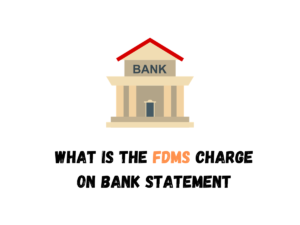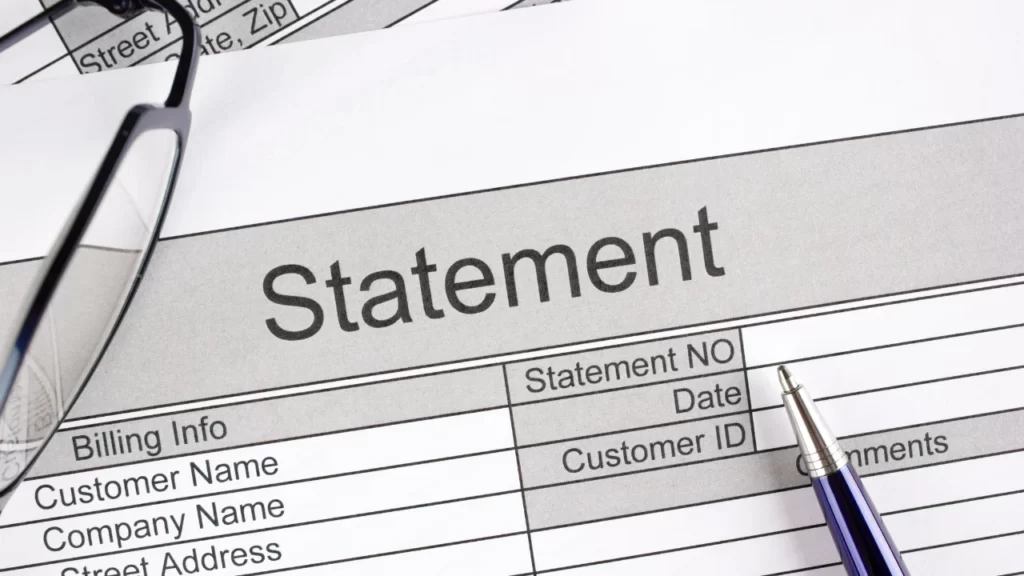If you have recently checked your bank statement and noticed a charge labeled “FDMS,” you may be wondering what it means and where it came from. FDMS stands for First Data Merchant Services, a company that provides payment processing services for businesses. In this article, we will dive into the details of FDMS charges on bank statements and what they mean for you as a consumer.
Read out PAI ISO Charge on Your Bank Statement?
What is First Data Merchant Services (FDMS)?

First Data Merchant Services, or FDMS, is a global payment processing company that was founded in 1971. They provide a wide range of payment solutions for businesses, including credit and debit card processing, gift card programs, and electronic check acceptance. FDMS serves over 6 million merchants worldwide and processes over 45 billion transactions annually.
FDMS works with various financial institutions, including banks and credit card companies, to facilitate the processing of payments for businesses. They act as a middleman between the merchant and the customer’s bank, ensuring that the transaction is secure and completed smoothly.
What is the FDMS Charge on the Bank Statement?
The FDMS charge on your bank statement is a fee that is passed on to you from the merchant’s bank. When you make a purchase using your credit or debit card, the merchant’s bank will charge a fee to process the transaction. This fee is then passed on to your bank, who in turn passes it on to you as the consumer.

The FDMS charge may appear on your bank statement as “FDMS,” “FDMS Settlement,” or “FDMS Debit.” It is usually a small percentage of the total transaction amount, typically ranging from 1-3%. For example, if you purchase $100, the FDMS charge maybe $2, resulting in a total charge of $102 on your bank statement.
Why Do Merchants Use FDMS?
Merchants use FDMS to process payments because it offers a secure and efficient way to accept credit and debit card payments. FDMS has a robust fraud detection system in place, which helps protect both the merchant and the customer from fraudulent transactions. They also offer 24/7 customer support and a variety of payment solutions to meet the needs of different businesses.
Additionally, FDMS offers competitive pricing for its services, making it an attractive option for merchants. They also have a wide network of financial institutions, allowing them to process payments from various types of credit and debit cards.
What Does the FDMS Charge Cover?
The FDMS charge on your bank statement covers the cost of processing the transaction. This includes the fees charged by the merchant’s bank, as well as the fees charged by FDMS for their services. The exact breakdown of these fees may vary depending on the type of transaction and the agreement between the merchant and FDMS.
It is important to note that the FDMS charge is not a hidden fee or an additional charge imposed by your bank. It is a legitimate fee that is necessary for the processing of your transaction. Without this fee, merchants would not be able to accept credit and debit card payments, which are becoming increasingly popular among consumers.
Are There Any Other Fees Associated with FDMS?
Apart from the FDMS charge, there may be other fees associated with using your credit or debit card for purchases. These fees may include foreign transaction fees, cash advance fees, and overdraft fees. It is essential to read the terms and conditions of your bank account or credit card to understand these fees fully.
If you have any concerns about the fees associated with your bank account or credit card, it is best to contact your bank directly. They will be able to provide you with a detailed breakdown of all the fees associated with your account.
How Can You Avoid FDMS Charges?
As a consumer, there is no way to avoid FDMS charges entirely. However, there are a few things you can do to minimize the impact of these charges on your bank statement.
Firstly, you can choose to pay with cash or a check instead of using your credit or debit card. This way, you will not incur any FDMS charges, and the transaction will not appear on your bank statement.

Secondly, you can opt to use a debit card instead of a credit card. Debit cards are usually associated with lower FDMS charges, as they are linked directly to your bank account. However, keep in mind that using a debit card may also come with other fees, such as overdraft fees.
Lastly, you can try to negotiate with the merchant for a lower FDMS charge. Some merchants may be willing to absorb the cost of the FDMS charge to keep their customers happy. It never hurts to ask, and you can save a few dollars on your purchase.
Conclusion
In conclusion, the FDMS charge on your bank statement is a legitimate fee that covers the cost of processing your credit or debit card transaction. It is a necessary cost for merchants to accept electronic payments and provides a secure and efficient way for consumers to make purchases. By understanding the details of FDMS charges, you can make informed decisions about your payment methods and minimize their impact on your bank statement.
